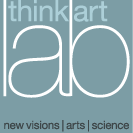Diamond Relations
FULL TEXT
http://www.thinkartlab.com/pkl/lola/Diamond Relations/Diamond Relations.html
http://www.thinkartlab.com/pkl/lola/Diamond Relations/Diamond Relations.pdf
Abstract
Because of their concreteness, the complexity of relations is more structured and is not always tackled by the axioms or properties of mathematical categories. E.g. the categorical properties of commutativity and transitivity are not necessarily holding for relations.
As an application, relations and the category of PATH as proposed by Pfalzgraf is presented. Diamond relations and a diamond version of PATH, i.e. JOURN (journey), based on diamond set theory, is sketched.
Motivation
How to introduce intransitivity (non-commutativity) in category theory? Two approaches are presented: Pfalzgraf’s generalized morphisms which are re-establishing categorical commutativity on a generalized level of relations and a sketch of polycontextural diamond constructions which are introducing different types of non-commutativity on the level of a generalized (disseminated) paradigm of categoricity.
Non-transitivity in diamond theories, thus, is not simply a total negation or rejection of transitivity but the acceptance of a plurality of different kinds of transitivity, enabling many kind of specific non-transitive relations.
Nontransitivity appears naturally for relations. Categories are by definition transitive (commutative). Hence, intransitivity for categories can be introduced only as a secondary concept. On the other hand, intransitivity for relations might be transformed to transitivity by a kind of a generalization or an abstraction to generalized relations, i.e. “a more general type of morphism” based on the difference of direct and indirect arrows (Pfalzgraf).
It is based on a very different paradigm to ask: “How to introduce intransitivity on the epistemological level of the definition of categories as such?”
It shall be shown, say sketched, that such a basic interplay of transitivity and different forms of non-transitivity is accessible in the framework of a polycontextural diamond category theory.
Road Map Metaphor
"Let us consider, for illustration, a simple practical example of real life: Looking at general relational structures is quite natural since transitivity and even reflexivity are not always existent in applications.
As a practical example let us look at a road map where the nodes (objects) are towns and the arcs (arrows) are road connections, then not every pair of towns has a direct connection (arrow), in general. Therefore, generally, starting from a point we have to follow a path of direct road connections passing several nodes (towns) before we can reach a goal.” (Pfalzgraf)
Pfalzgraf’s strategy to keep transitivity by generalization could be paraphrased as:
A loves B, B loves C, A hate C , then, by generalization from intransitivity to transitivity:
A is-in-emo-relation to B,
B is-in-emo-relation to C, hence,
A is-in- emo-relation to C .
On the other hand, if A is connected with B, and B is connected with C, then A is connected with C, too. At least in a stable world, where the definition of connection is not suddenly transforming itself.

JOURN’s catalogue of journeys
There are structurally different kinds of journeys on offer.1. PATH is a very special type of journey. It is an intra-contextural journey in a single contexture without structural environment. Hence, properly formalized as a category.
2. This situation might be distributed. Journeys in different but mediated contextures are possible. Still isolated and each thus intra-contextural.
3. A new kind appears with possible switches (permutation) and transjunctional splitting (bifurcation) simultaneously into paths of different contextures. Still without complementary environment in the sense of diamond theory.
4. Now, each contexture, even an isolated mono-contexture, might be involved into itself and its environment. This happens for diamonds, which are containing antidromically oriented path in categorical and saltatorial systems. Such journeys ar group-journeys with running into opposite directions.
5. Here, a new and risky journey is offered by the travel agency by inviting to use the bridging rules between complementary acceptional and rejectional domains of categories and saltatories of a diamonds. All that happens intra-contexturally, i.e. diamonds are defined as the complementarity of an elementary contexture.
6. Obviously, diamond journeys might be organized for advanced travellers into polycontextural constellations. Hence, there are transcontextural transitions between diamonds to risk. Interestingly, such journeys might be involved into metamorphic changes between acceptional and rejectional domains of different contextures of the polycontextural scenario.
Further Metaphors
As a metaphor, the idea of colored contextures, each containing a full PATH-system, involved in interactions between neighboring contextures, might inspire the understanding of journeys in pluri-labyrinths of JOURN.
Such journeys are not safely connected in the spirit of secured transitivity but are challenging by jumps, salti and bridging and transjunctional bifurcations and transcontectural transitions.
This metaphor of colored categories, logics, arithmetic and set theories gets a scientific implementation with real world systems containing incommensurable and incompatible but interacting domains, like for bio- and social systems.
FULL TEXThttp://www.thinkartlab.com/pkl/lola/Diamond Relations/Diamond Relations.html
http://www.thinkartlab.com/pkl/lola/Diamond Relations/Diamond Relations.pdf








